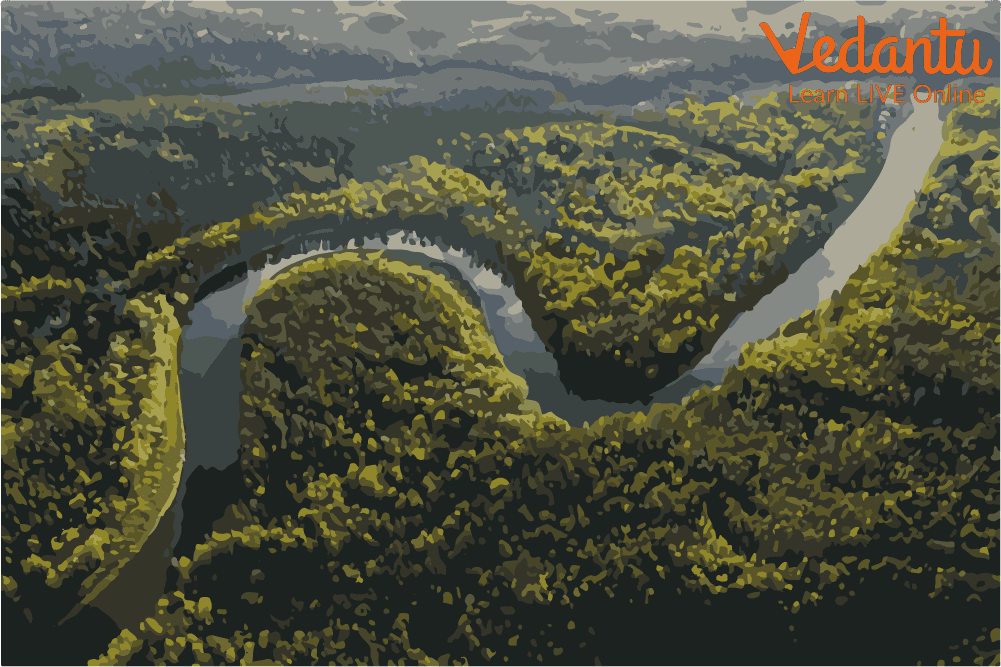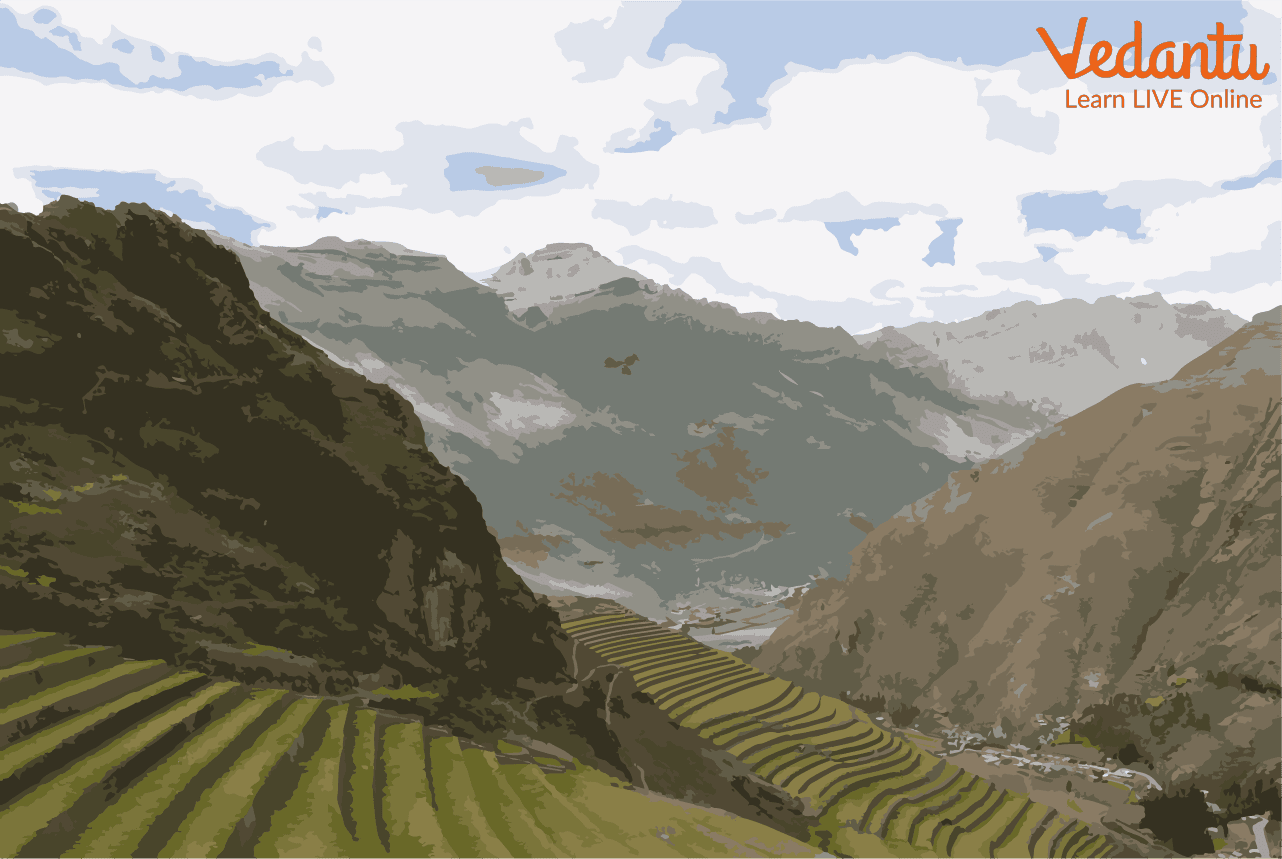




Why is the Amazon River Important?
We have seen in many movies people travelling through rainforests, fighting piranhas, and tumbling over rapids and waterfalls and we might have noticed some of the facts about the Amazon river. If not here, we can know. Scenes around amazon river are usually packed with lots of action and adventure, with people exploring various dangerous and exotic plants and animals. Most of these events take place in the Amazon Rainforest, the largest rainforest on our planet, which also houses the second longest river in the world. Today, we will explore the 10 facts about the Amazon River, its rich diversity, exotic inhabitants, and amazon river location.

The Amazon River
The Amazon River
This large and intricate river body weaves through one of the most diverse, complex, and essential ecosystems on this planet! The Amazon River is the second-longest river, and the Amazon Rainforest is the largest rainforest. It has proven vital with its vast width and length in transportation while also being home to different species of plants, animals, and reptiles.
Facts about the Amazon River
To explore the Amazon River more, here are some intriguing facts about it.
Amazon River Location: The Amazon River is located in the continent of South America and spans over eight different countries and one overseas territory - Brazil, Bolivia, Colombia, Ecuador, Guyana, Peru, Suriname, Venezuela and French Guiana.
The Amazon River is now the second-longest river in the world, after only the Nile River in Africa.
How long is the Amazon River: The river measures as long as 6,400 kilometres (4000 miles) long and contains more than 1,100 tributaries.
The Amazon River’s width is between 3.2 and 9.6 kilometres during the dry season from June to November and can reach up to a whopping 43 kilometres in the wet season during the months of December, January, February, March, and April.
The source of the Amazon River is in the Andes Mountains, near the Pacific Ocean, and empties into the Atlantic Ocean at the coast of Brazil.

The Andes Mountain, Source of the Amazon River
The Amazon River has the largest drainage system in the world, ranging over an area of 7 million square kilometres and is twice that of the Congo River.
The river and surrounding areas are rich in diversity, comprising over 40,000 plant species, 2,400 freshwater fish species, and more than 370 different types of reptiles.
Facts about Piranhas in the Amazon River: It is home to various endangered species such as the ‘pink river dolphins,’ giant otters, uakari monkeys, jaguars, pygmy marmosets, and more. The pink river dolphins change colour from grey to pink to white with age. The commonly known piranha is the “red-bellied piranha” found in the amazon river. These are the facts about piranhas in the amazon river.

The Pink River Dolphin
It is estimated that almost 20% of the freshwater on the Earth’s surface is carried by the Amazon.
The Amazon River’s freshwater dilutes the Atlantic Ocean’s saltiness for roughly 160 kilometres from the shore.
The Importance of the Amazon River
In addition to housing various species as mentioned above, the Amazon River is also important in other ways. It provides for the locals of the areas as it greatly aids in transportation, agriculture, and sustenance. The area produces about 80% of foods such as coffee, tice, chocolate, black peppers, and more. Along with the population of the countries, various indigenous people inhabit 28% of the basin, with 350 different ethnic groups.
The rainforest area through which the Amazon river weaves stabilises the local and global climate as it contains 90 to 140 billion tons of carbon. Considered the “lungs of the Earth”, the rainforest produces up to 20% of the Earth’s oxygen. It also consists of various medicinal plants. With the recent changes in our climate and pollution, it is imperative that this area and water bodies be preserved as they not only are a valuable resource for millions but also because they are home to various species who share this planet with us.
Summary
To sum up, the Amazon River is the second longest river which is home to a variety of animals, plants, and insects, but not limited to the endangered Pink River Dolphin, Poison Dart Frog, Giant Otters, and more. The importance of the Amazon River to not only the human inhabitants of the region but also the entire Earth through its oxygen production and freshwater supply. By analysing all the acts of the Amazon River, we conclude that it is a vital and essential element of our environment and measures must be set in place to protect the Amazon River as well as its diverse ecosystem.
FAQs on Essential Facts About the Amazon River
1. How many rivers flow through the Amazon rainforest?
The Amazon River has approximately 1,100 tributaries, 17 of which are more than 1,500 kilometres (930 miles) long.
2. How did Amazon get its name?
When the first Europeans explored the Amazon in 1541, they encountered a tribe of “fierce women” whom they referred to as Amazonians. This was a reference to the legendary female warriors as written by Homer in the Greek epic the ‘Iliad.’ When the explorers returned back to Spain, their tales spread, and eventually the name they coined was used to refer to the region we now know today as the Amazon River and Rainforest.
3. What rivers run through the Amazon rainforest?
It has a number of important tributaries in Colombia, Ecuador, and Peru, some of which run into the Maraon and Ucayali rivers, while others flow directly into the Amazon. Putumayo, Caqueta, Vaupes, Guaina, Morona, Pastaza, Nucuray, Urituyacu, Chambira, Tigre, Nanay, Napo, and Huallaga are among them.









